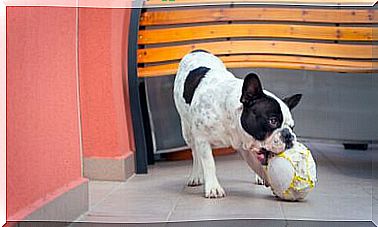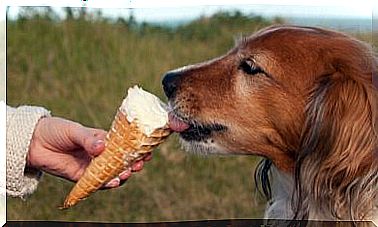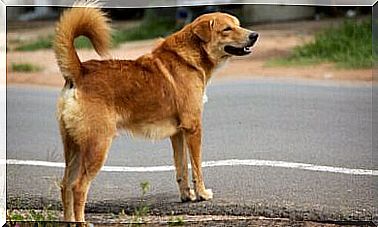What To Do If Your Dog Is Having Seizures?
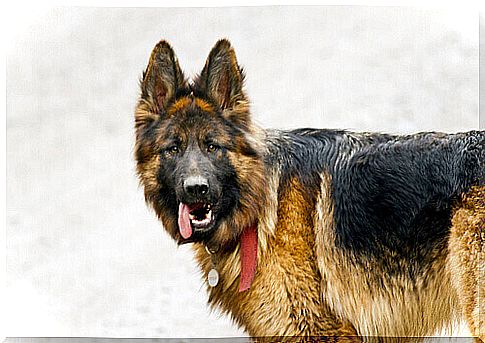
Seizures are the product of disorders affecting the nervous system. They manifest themselves in the form of motor disturbance and, in some cases, with loss of consciousness. If your dog is having seizures, don’t hesitate to take him to the vet immediately.
The causes of seizures can be many. A common mistake is to believe that it is a disease. Seizures are only a single symptom of a disease or condition that can be very serious.
Therefore, the diagnosis of the specialist is crucial. In fact, it will allow you to investigate and discover the causes of the problem, indicating the most appropriate treatment if your dog has seizures. When a crisis occurs, you owners will need to know how to act, in order to always protect and protect the health of your pet. Let’s see together what convulsions are, what they originate from and how to intervene in the most appropriate way.
Why does a dog have seizures?
The causes can have different origins, from traumatic events to congenital events. The action of external agents, such as medicines, can also cause convulsions.

- If the animal has received a severe blow to the head, this trauma can also cause convulsions. In these cases, the veterinarian must be informed about everything the dog may have done and the situations he has experienced directly.
It is very likely that the specialist decides to do a cranial brain study to evaluate possible injuries.
- Metabolic dysfunctions. Some metabolic diseases are associated with seizures in dogs. Without forgetting other particular hormonal disorders such as, for example, hepatitis, hypoglycemia and hypocalcemia.
The same happens with the pathologies associated with the most common thyroid disorders.
- Infections or poisoning. If you notice that your pet is having seizures, it is important to rule out the presence of a possible infection. The most dangerous one can relate to meningitis.
Drug intoxication can also cause seizures.
- Breast tumors in dogs and other degenerative diseases must be diagnosed by the specialist. Especially, of course, in case your best friend has been shown to be suffering from seizures.
In general, brain tumors are associated with seizures as well as the better known chronic degenerative diseases.
- Seizures can also be due to congenital causes. Some breeds are more prone to seizures than others, among other things because they have small brain malformations.
The types of dogs most frequently seized are the Chihuahuas, Yorkshire and the Poodle. In all these breeds hydrocephalus is very common, which can degenerate into epilepsy itself.
What to do when a dog has seizures?
In case of attack
If you anticipate that your dog is going to have a seizure, it is important to see the specialist immediately. The same should be done if you suspect a nerve disorder. For example, a preventative way is to take the dog for a check-up after suffering a severe trauma to the head, even if the seizures have not yet shown.
Attacks occur in three stages:
- The first stage can be confused with an emotional reaction. The dog becomes more nervous, trembles and shows excessive salivation. This condition can last up to two days and be presented for periods, intermittently.
- The subsequent phases are associated with the actual crisis. When the dog has seizures, the muscles contract and the body appears involuntarily shaken. In some cases, the animal even becomes unconscious. Pay attention: as soon as you wake up, he may attack you because he is disoriented and does not recognize you.
- Slowly, the dog will gradually recover and will need your affection and the right comfort to calm down completely.
During seizures
- When your pet is having seizures, it’s important to stay calm. Any objects that could be dangerous or injure the dog, during the seizure, should be removed.
- Do not hug the dog, do not try to grab him or lift him. Instead, place pillows or a soft blanket to prevent abdominal injury .
- Sound or light stimuli can further disturb the dog and should therefore be avoided. Also, it is not recommended to cover him or give him water or food. Basically, you will have to have the calm to observe the evolution of the convulsion, without interfering: never put your hand in the dog’s mouth!
- Just look at how the spasms work on the animal. The only thing you can do is move the dog’s head back gently, making sure that the tongue is sticking out to the side. In doing so, you will avoid possible suffocation.
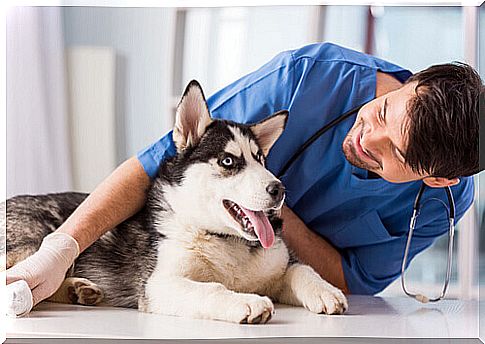
After the crisis
- Once the attack is over, your job is to call your vet right away, who will ask you some specific questions.
- For example, it might ask you how many times the crisis occurred, how long it lasted, inviting you to describe what happened before the crisis.
- You will also need to inform the specialist of any medications ingested before seizures occur and if the animal has suffered any blows to the head.
- As the animal recovers, it is important to encourage its breathing. Make room for it, open the windows and keep the environment quiet, avoiding loud noises, music and confusion. Your dog, weakened and disoriented, will slowly regain consciousness, so be patient. Do not give him medicines at random, without the authorization and explicit indication of your trusted veterinarian.
The specialist’s diagnosis will clarify the causes of the last attack and only he is authorized to indicate the treatment to follow. In general, seizures are associated with epilepsy, but a dog suffering from seizures may not necessarily be epileptic.
